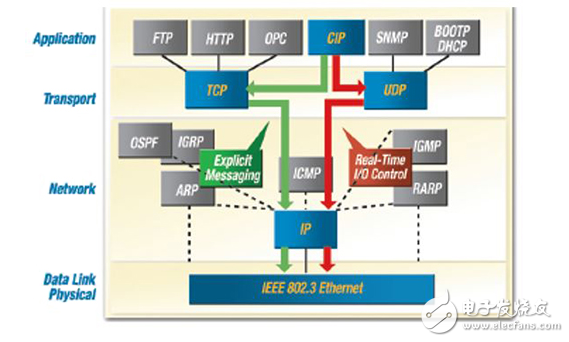
资料下载

32位MCU实现工业以太网
32位MCU实现工业以太网
以太网在企业网络中的优势使它在工业网络空间中具有明显的优势。使用一个单一的核心协议在整个企业允许数据无缝地从工厂的地板业务单位,使人们有可能更有效地管理生产计划,最大限度地减少库存成本,并优化维护操作。
以太网不是为工厂设计的,但标准以太网的主要缺点是它不能提供实时响应所需的许多工业应用,如过程和电机控制。几十年来,确定性的协议,如CAN(控制器局域网)和PROFIBUS(过程现场总线)主导工业网络。虽然这些协议仍然保持相当大的市场份额,几年前以太网变种开始出现,提供实时性能,标准以太网缺乏。

In order to rationalize the unproductive diversity that developed in industrial networking, in 2001 the Open Device Vendor Association (OVDA) was formed to create and maintain the Common Industrial Protocol (CIP) to ensure some level of compatibility. Since then, several protocols, including EtherNet/IP, DeviceNet, ControlNet, and CompoNet have implemented CIP in the upper levels of their protocol stacks. Hundreds of vendors now support CIP.
EtherNet/IP is the name given to CIP when it is implemented over standard Ethernet as defined by IEEE 802.3. The “IP” in EtherNet/IP stands for Industrial Protocol.
声明:本文内容及配图由入驻作者撰写或者入驻合作网站授权转载。文章观点仅代表作者本人,不代表电子发烧友网立场。文章及其配图仅供工程师学习之用,如有内容侵权或者其他违规问题,请联系本站处理。 举报投诉
- 相关下载
- 相关文章





